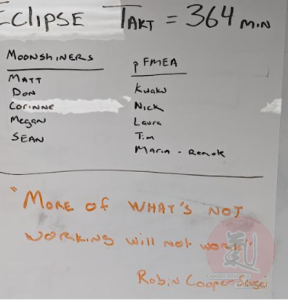By Katherine Barnes
In November, I flew to sunny Florida with 5 senior members of my Cleveland dojo anxious to be a little out of my element at the Winter Shrine Session. Though I fell in love with the art of Aikido at college in the 90’s, I did not return to the study until 2019, so I would be the least experienced and lowest ranking student on the mat. Tom Sensei and Doug Sensei encouraged me not to miss the opportunity to train at the Aiki Shrine and they, invested extra hours preparing me for my 2nd kyu test so I could meet the criteria.
I knew my anxiety about the trip was unwarranted. Aikido practitioners are genuinely kind and enthusiastic to share their love of the art. I have never met an exception to that statement. Over the past few years, I had already met many of the people that I would train with during the session at seminars in the Midwest. Every person, on and off the mat made me feel welcome.
The shrine dojo is a truly beautiful structure tucked away in Florida woods. It was like stepping out of my normal life for a weekend. When we arrived, we were shown how to perform a simple purification ritual at the gate. Before the first session, Sensei Julie “JET” Tollen showed me and another student how to make daily offerings of rice, salt and water to the kami. We placed the offerings at the inner shrine between pictures of Patty Saotome Sensei and Wendy Whited Sensei and lit the incense that would still be in the air during the first class.
Saotome Sensei led the opening class on Friday evening, welcoming everyone and insisting that the shrine belonged to all of us. “Not Saotome’s shrine, ASU people shrine.” Even after sunset, the heat and humidity of south Florida were unforgiving, but practice was energetic and flew by quickly. After class, we all shared a meal and chatted into the evening.
The following day, Ania Small Sensei led the first training session. What I remember most from that training was her helping me try to coordinate movement in my body that had multiple simultaneous directions. She was working in three-dimensional space while I was still thinking in two dimensions. Up, but also forward. Down, but with a smooth outward extension. It looked to me like her movements had an air-cushion effect where they kind of settled into a shape that continued to move. After her class, Saotome Sensei led another class before lunch. Watching his movements, I was struck by their directness and simplicity. It seemed like something I could understand and replicate, but practice was humbling.
In the afternoon, we spent some time working on the grounds of the ranch clearing and burning brush from recent storms. Lee Crawford Sensei and Robin Cooper Sensei led a discussion group where we talked about community service, mixed art dojo spaces, promotion requirements and how to get more people interested in Aikido.
Robert Deppe Sensei led practice in the evening expanding on the lesson that Satome Sensei had taught in the morning. Mercifully, he slowed the demonstrations down a bit and talked through what made the techniques work. He demonstrated incorporating rowing technique into your body movement and finding a place of advantage during the interaction. As the sun set, we finished practice with Saotome Sensei again. During that last practice of the day, ukes were launched the entire length of the mat. Three weeks later, I am still trying to figure out how Don Ellingsworth Sensei was able to slow time down and hang in the air for so long before landing, bouncing and re-attacking in a single breath.
When we left for the evening, my body felt completely dried out with all the salt reserves dusting the outside of my skin. It felt much different to be driving a 50-year-old body than when I first experienced Aikido as an 18-year-old, but the pleasure of trying new and difficult interactions reminded me of my younger self.
On the final day of the session, Morning practice was led by Sensei Robin Cooper. I loved her effervescent enthusiasm. It was so contagious and energizing! She went straight to principles without slowing down much on technique. “Don’t get hit.” “You can’t substitute technique for Aikido she said.” Her movements, like her words were succinct and clever. She spent some time working with us on keeping the interactions alive and honest in the moment. She explained how if you go just a millimeter too far, one technique stops working, but a different opportunity opens. She also spent time on ukemi, demonstrating how if uke doesn’t follow through or connect, there’s no reason to react or force a technique. I’m pretty sure she was looking directly at me when she said, “More of what’s not working will not work.” It’s a phrase that I loved so much, I took it to work with me the next day and released that bit of Aikido into the wild.

Katherine Barnes is a member of Lakeshore Aikido in Cleveland Heights, OH.
